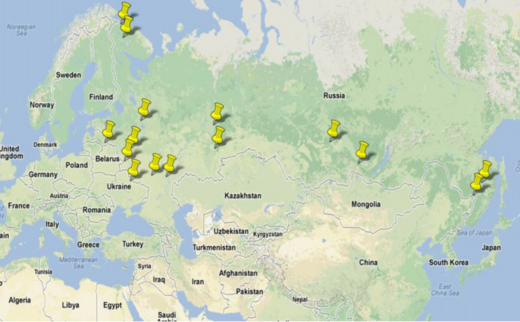UNIDIR is looking for a researcher to run a project on tactical nuclear weapons. Here is the formal announcement at Insipra, the UN web site. I've had a few people contacting me already with questions, so I thought it would make sense to say a few words about the project.
It's no secret that this is not a great time to discuss arms control in general and for measures to address tactical nuclear weapons in Europe in particular. So, the project will not try to suggest any specific steps that would help restart the dialogue between Russia and NATO. That would take much more than a research project, at UNIDIR or elsewhere.
What we will try to do at UNIDIR is to look at some ideas on how to deal with tactical nuclear weapons when we eventually get to the point of discussing them. The general outline of the approach is, in fact, not very controversial - any agreement would probably consolidate all these weapons in some storage facilities. Where these facilities might be is a matter of dispute - Russia wants them on national territories, NATO wants them away from its borders - but it's a political, not substantive dispute. Then, there would have to be a way of verifying that these weapons are there.
There is a question of numbers as well. One of the ideas that is quite popular in Washington is that there would have to be some common ceiling for all weapons - strategic and not - so each country is free to choose its own mix. Specific numbers that are mentioned are somewhere around 2500-3000 total warheads. I don't think it's a good idea (to put it mildly), especially if you notice that we already have this ceiling - 1550 operationally deployed warheads in New START. Yes, this treaty does not deal with non-strategic weapons, but if you take its definitions, we are pretty close to having zero deployed non-strategic warheads (it's a bit more complex than that, but you get the idea).
So, one of the main ideas of the UNIDIR project is to see if you can use the New START provisions to deal with non-strategic weapons. That would range from New START definitions to its verification and inspection provisions. As my colleagues and I demonstrated before, New START is a very powerful instrument that can be used, for example, to extend transparency provisions to arsenals of all nuclear weapon states. I also tried to look at New START and non-strategic weapons in a paper, prepared for a APS-CSIS workshop in 2013. Read the paper to get a sense of my thoughts about where the project might go.
In practical terms, the project will involve looking at where weapon storage facilities are, getting a general sense of how one can conduct verification activities there, and identifying areas where New START provisions can be applied. This part of the work would probably require looking at satellite imagery. Knowledge of New START verification arrangements would be a considerable asset as well. Given the recent developments around cruise missiles, we will probably have to look into various approaches to, say, SLCM verification, which are technically not part of the START process. We then plan to have an expert meeting to discuss the ideas developed during the first stage of the project. And finally, the project will produce a report with its findings.
UNIDIR will definitely prefer someone working in Geneva full time, but we may have some flexibility for an exceptionally good candidate. The project will start as soon as practically possible. Feel free to write to me if you have any questions. However, if you want to apply, please use the UN site to do so.


Comments
Zero tactical nukes? According to wikipedia, Russia has about 150 tu-22ms, each capable of delivering 10 nuclear cruise missiles. What about all the cruise missiles in subs and ships and even other types of aircraft? What about iskander systems which are also nuclear capable?
If you read it carefully, there is a qualifier there - "if you take [New START] definitions."